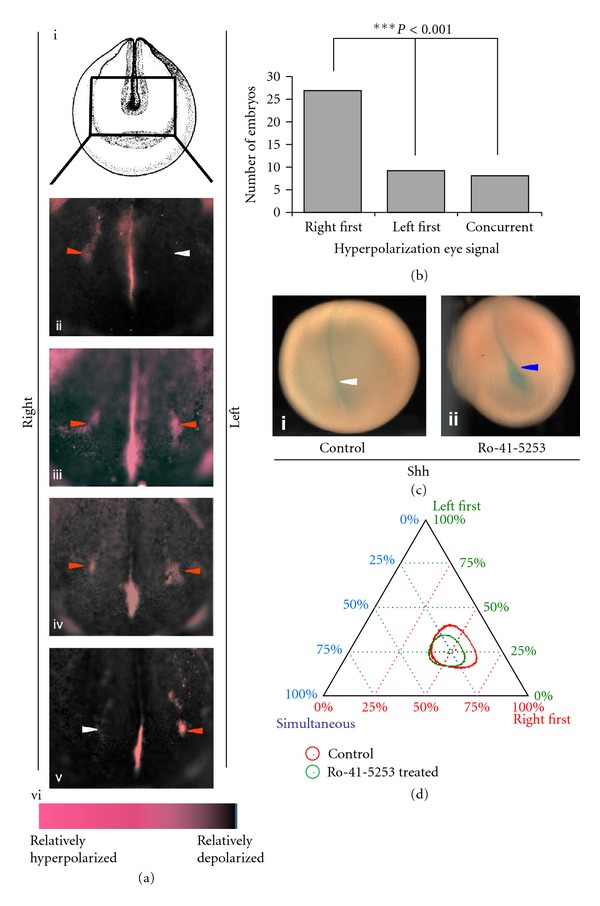Figure 1.

Rightward bias in induction of polarization signal regulating eye development. (a) Incubation in voltage-sensitive CC2-DMPE dye of multiple Xenopus embryos tracked from stage 18 to stage 20 shows the representative temporal progression of hyperpolarization signal (red arrowheads) during development (ii)–(v). White arrowheads indicate the lack of a coherent (contiguous) spot of signal. (vi) Color bar representing the scale of relative depolarization and hyperpolarization as seen with the CC2-DMPE dye. (b) Bar graph comparing a group of Xenopus embryos (n = 44) that were tracked individually and analyzed for the first detectable hyperpolarization signal using CC2-DMPE; a significant bias is observed favoring the right side. A pairwise comparison and Chi-squared test analysis were done between the groups. (c) In situ hybridization analysis of Sonic Hedgehog (Shh) signal in stage 18 Xenopus embryos either untreated (control) ((i) white arrowhead) or treated with 1.5 μM retinoic acid receptor inhibitor Ro-41-5253 ((ii) blue arrowhead) from midgastrula stage. Ro-41-5253 treatment significantly enhances the Shh expression signal in 92% of treated embryos (n = 29). (d) Categorical data analysis using a ternary plot shows that the treatment with Ro-41-5253 (1.5 μM) that inhibits retinoic acid receptor signal resulted in no significant change in the rightward bias of polarization signal (as observed via CC2-DMPE staining) involved in Xenopus eye development. In control (untreated) embryos the polarization was 51.5% right first, 26.5% left first, and 22% simultaneous (n = 72). In the Ro-41-5253-treated embryos the polarization was 48% right first, 25% left first, and 27% simultaneous (n = 126). The circles in the plot represent 95% confidence intervals. Using the calculations provided by a ternary plot algorithm (https://webscript.princeton.edu/~rburdine/stat/three_categories), the results are statistically significant only when there is no overlap of the confidence intervals.
